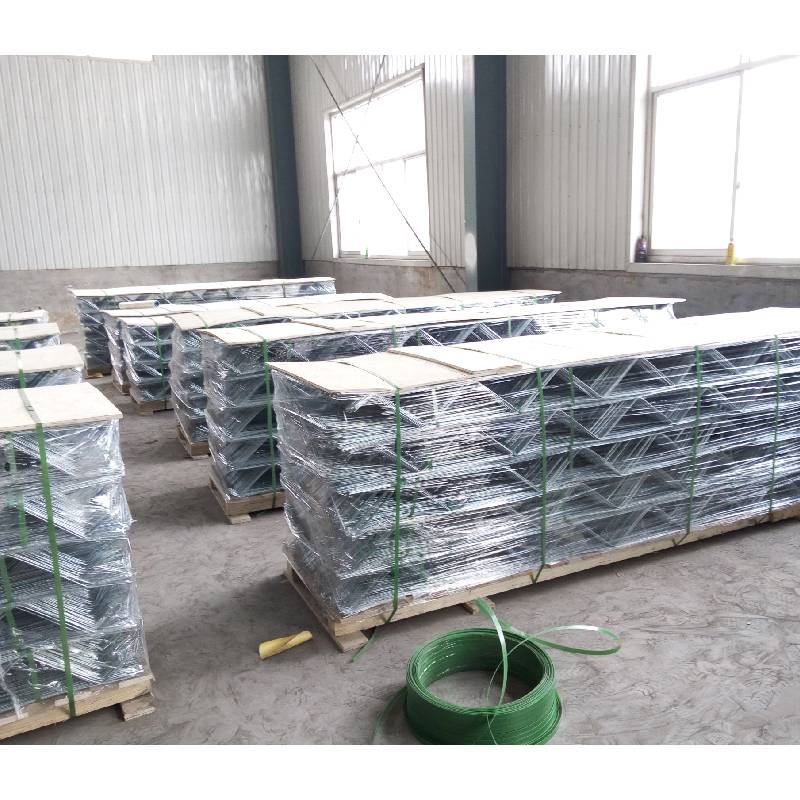
- Mobile Phone
- +8613931874955
- sales@cntcmetal.com
Exploring Block Ladder Reinforcement Techniques for Enhanced Structural Stability and Performance in Construction
Exploring Block Ladder Reinforcement A Comprehensive Overview
Block ladder reinforcement is a vital concept in various fields, particularly in construction and civil engineering, where the durability and stability of structures are paramount. This technique involves the strategic arrangement and reinforcement of concrete blocks to ensure that structures can withstand various loads and stresses. In this article, we will delve into the fundamentals of block ladder reinforcement, its applications, advantages, and the engineering principles underlying this innovative method.
Understanding Block Ladder Reinforcement
At its core, block ladder reinforcement focuses on enhancing the structural integrity of masonry and concrete block systems. The term block ladder refers to the arrangement of reinforcement bars (rebar) that form a ladder-like structure within the blocks. This reinforcer connects various blocks and layers, ensuring that forces are distributed evenly throughout the structure. By using this technique, engineers can significantly increase the tensile strength of the walls, making them more resistant to cracking, bending, and other forms of stress.
The key to effective block ladder reinforcement is the judicious placement of steel reinforcements and the careful selection of materials. Typically, horizontal and vertical rebar intersections resemble the rungs of a ladder, which creates a robust framework that enhances the load-bearing capacity of the blocks. This approach is particularly advantageous in areas prone to seismic activities or high winds, where conventional construction methods may fall short.
Advantages of Block Ladder Reinforcement
The use of block ladder reinforcement offers numerous benefits. One of the most significant advantages is the increased overall strength of the structure. By reinforcing concrete blocks, the likelihood of structural failures is reduced, leading to safer buildings. This reinforcement not only enhances the resilience of the material but also extends the lifespan of the structure, reducing the need for frequent repairs and renovations.
block ladder reinforcement

Moreover, block ladder reinforcement allows for flexibility in design. Engineers can create more intricate and innovative designs without compromising structural integrity. This adaptability is crucial in modern architecture, where aesthetic appeal and safety must go hand in hand.
Another notable benefit is the efficiency of material use. By optimizing the placement of rebar within blocks, builders can use less material without sacrificing strength. This efficiency can lead to cost savings, making block ladder reinforcement an economically viable option for many construction projects.
Applications in Modern Construction
Block ladder reinforcement is employed in various types of construction, from residential buildings to commercial structures and infrastructural projects. It is particularly prevalent in regions that experience frequent natural disasters, such as earthquakes or hurricanes. Buildings utilizing this technique can better withstand the forces exerted by such events, providing peace of mind for occupants and investors alike.
In addition to enhancing strength and durability, this method also contributes to energy efficiency. Well-reinforced structures often exhibit better thermal insulation properties, leading to lower energy consumption for heating and cooling. This aspect aligns with current trends in sustainable building practices, where energy efficiency is prioritized.
Conclusion
In essence, block ladder reinforcement is a critical component of modern construction that enhances the strength, durability, and design possibilities of structures. As engineers continue to innovate and improve on reinforcement techniques, the integration of technologies and materials will further enhance the efficacy of block ladder reinforcement. By investing in these methodologies, we can build safer, more resilient communities capable of withstanding the challenges posed by both nature and time. Through ongoing education and research, the full potential of block ladder reinforcement can be realized, paving the way for a more robust infrastructure for future generations.
share:
-
Your Source for Concrete Wall Ties and Masonry AccessoriesNewsJul.10,2025
-
Unlocking the Power of Iron Wire for Every ProjectNewsJul.10,2025
-
Explore Advanced Chain Wire and Stainless Steel Mesh FencingNewsJul.10,2025
-
Discover the Benefits of Annealed Wire ProductsNewsJul.10,2025
-
Discover China Stainless Steel Wire Mesh SolutionsNewsJul.10,2025
-
Build with Confidence Using High-Performance Masonry AccessoriesNewsJul.10,2025
-
Why Sacrificial Formwork Is Redefining Underground ConstructionNewsJun.06,2025



















